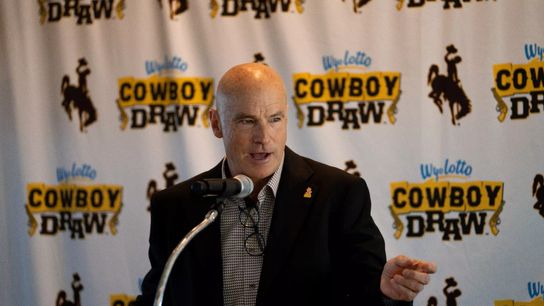He isn't new to the scene, isn't reckless and doesn't throw words around.
Wyoming's Tom Burman is an athletics director's athletics director. He works behind the scenes, happiest when his student-athletes and coaches are spotlighted.
So when Burman told popular Fox Sports Radio personality Nate Brown, a Midwest staple, that college athletics -- and especially college football -- has a divide coming, Burman didn't catch himself off-guard.
"I do think there will be further change," Burman, a 20-year veteran atop athletics at his alma mater, said. "When you look at South Dakota State, North Dakota State, Montana State, Montana, they're different than the rest of FCS. And, you know, for a school like Wyoming it makes a lot of sense, if there was a way, that a few of those schools joined the Mountain West. But it didn't make sense for everybody in the Mountain West, and that's why there wasn't an opportunity for them to join.
"In the long run, I think there will be a change and I think there will be a division that is created where the top 40-ish schools separate, and, in my opinion, they'll collectively bargain with student-athletes. They will be employees and those are budgets in the $250 to $300 million range and then the rest of us will reconfigure where we are. And I wouldn't be surprised if that allowed for the Dakotas and Montana schools to make some decisions."
A former College Football Playoff Selection Committee member, Burman was candid when asked by Brown about the future of the Mountain West Conference -- as well as the impending exits of some of the reorganizing league's more visible members.
"I'd be disingenuous if I didn't say I would have liked it to stay together, but that was a choice they made," Burman said of Boise State, Colorado State, Fresno State, San Diego State and Utah State. "I think they will regret it at some point because all of us we're just, we could have had a great Western league by adding Washington State and Oregon State if we just would have stayed together.
"But, we divided it up and now you have two leagues fighting for the same media dollar and same media time. I'll give them their props, they took five programs that they felt were the most valuable media-market wise and valuable competitively; it's a great basketball league. I don't see much difference between the Mountain West and Pac-12 going forward; basketball, they're ahead of us right now."
As Brown expertly noted, Wyoming has earmarked almost $3 million for its participation in the revenue-sharing segment of the House Settlement. Burman deftly outlined the methodologies for Wyoming's participation in the Settlement.
"We added eight scholarships on the women's side, roughly $300,000ish," Burman said. "There's a million in Alston Scholarships and ... a million-five probably in rev-share. We do have some athletes in our football program in particular that are taking home some cash. ...
"Are we going to be able to keep up with the Power 4 schools when one of our kids is wanted? No, but on the other hand, we've lost quite a few kids who have gone to Power 4 schools. Most of the time they're starters but ... they're not getting on the front of the poster, they're not getting recognized, they're not getting promoted as a star. There's some value in being seen. If you're good enough to play in the NFL, scouts will find you. It doesn't matter if you're at Wyoming or Sioux Falls, they'e going to find you."
What Burman stridently hopes to avoid for his institution -- and college athletics in general -- is the downsizing of less-visible, far less money-driven endeavors.
"It's hard, there's no doubt," Burman said. "The revenue challenge is way different than when I started in this business years ago. At times, it's frustrating but I still believe in a broad-based program. I worry about the future of college athletics; I worry about programs dropping down to a very bare-bones level or eliminating scholarships in Olympic sports just to fund rev-share for football.
"We don't want to do that. We're trying hard not to do that, but that is a decision-point that some schools are facing right now and will face more in the future."
